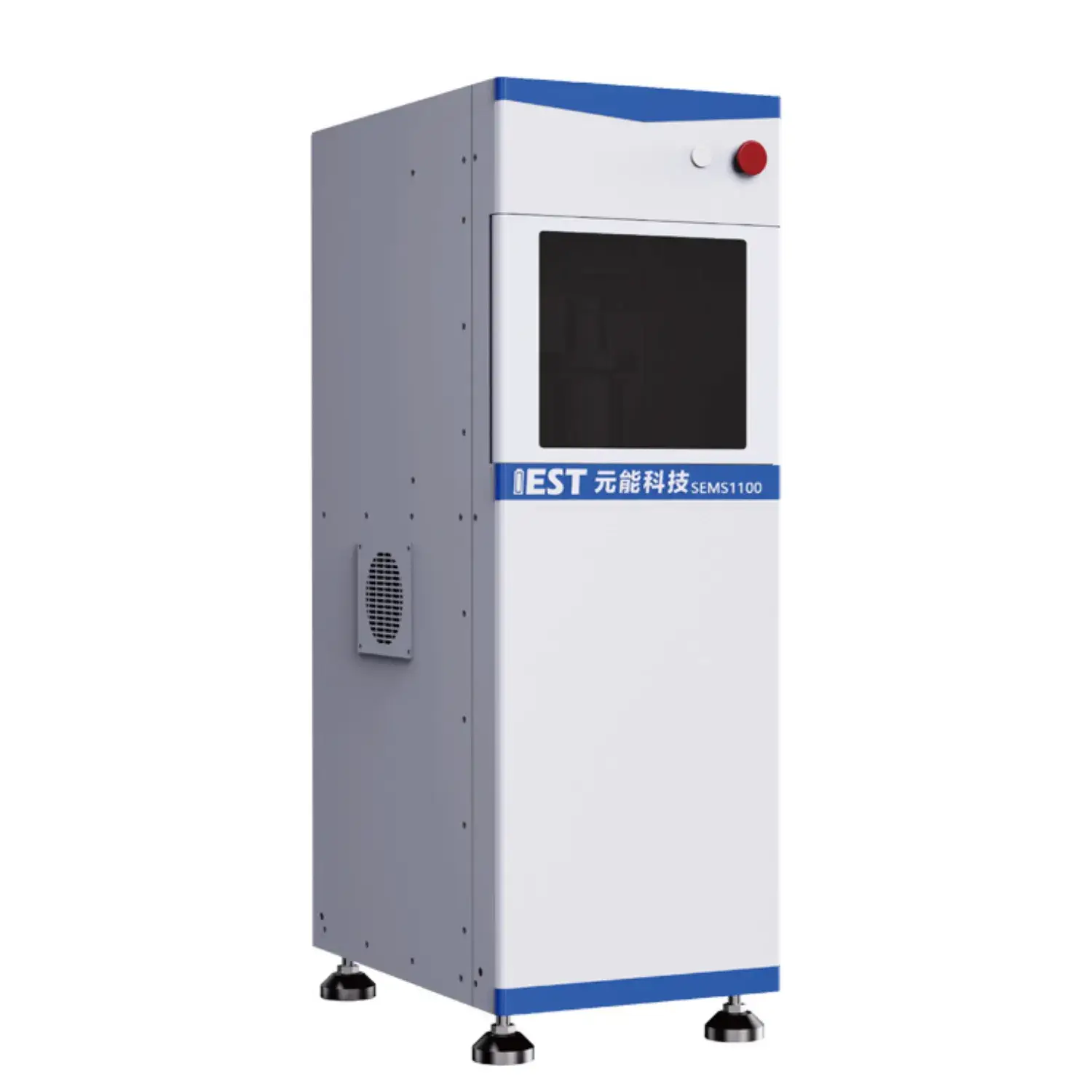
Electrochemical impedance analysis clarifies battery dynamics in lithium cells, across different temperature regimes. Via analyzing the impedance response of the battery across frequencies, valuable insights can be obtained regarding the internal resistance, charge transfer kinetics, and overall state of health of the lithium-ion battery system. Importantly, EIS testing can help to quantify the impact linked to temperature fluctuations on key characteristics such as electrode polarization resistance, ionic conductivity, and double layer capacitance.
- Furthermore, EIS data can be used to identify potential failure mechanisms caused to thermal stress, enabling the development of strategies for optimizing battery topology and improving their overall durability.
- Such information is crucial for ensuring the safe and stable operation across many lithium-ion batteries in a wide range regarding applications, such as EVs, consumer electronics and grid storage.
Rapid Life-Cycle Testing of Lithium Batteries: A Comprehensive Analysis
Li-ion power many modern devices, demanding rigorous testing to ensure their reliability and longevity. ADT serves as an essential method for simulating the outcomes of prolonged use and diverse service conditions on battery performance. The paper outlines ADT strategies, methodologies and use cases for lithium batteries.
ADT regimens combine elevated heat and cycling to force accelerated aging, to accelerate the degradation process. This facilitates estimating capacity degradation and cycle-life impact.
Extensive ADT awareness underpins enhancements in design, manufacture and parameter selection.
Electrochemical Impedance Spectroscopy (EIS) for Lithium-ion Battery Characterization
Electrochemical impedance spectroscopy analysis, abbreviated as EIS, is a powerful technique for probing the internal resistance and electrochemical processes within lithium-ion batteries. Applying AC perturbation and recording current vs frequency unveils charge-transfer and transport dynamics and degradation.
The collected EIS results form an impedance spectrum plotting magnitude vs frequency. Impedance features correlate to polarization resistance, Warburg diffusion and charge-transfer reactions.
Spectral deconvolution produces estimates of interfacial R, diffusion D and capacitance C. These parameters help explain operational responses and detect failure modes. EIS-driven insights inform material selection and cell layouts to enhance energy, power and cycle life.
Powder Resistivity Systems: Theory and Practice
These systems perform critical resistivity testing in the characterization of powdered materials. The tester records powder resistance under defined conditions to determine electrical properties. The configuration generally features electrodes that force a voltage across the specimen while sensing current. Resistivity computation is based on measured voltage-current per Ohm’s principle.
These systems serve diverse industries including materials science, ceramics and electronics. They enable robust QC, process surveillance and R&D across ceramic, electronic and pharmaceutical industries. Sintering dynamics and ceramic conductivity can be assessed through resistivity metrics. Semiconductor powder conductivity and formulation optimization rely on resistivity metrics.

In-Line Resistivity Monitoring for Powder Processes
Continuous resistivity feedback supplies actionable control over powder properties during fabrication. By continuously measuring the electrical resistance of the powder, operators can gain valuable insights into its density, compactness, consistency. Operators utilize resistivity trends to tweak compaction, flow and particle distribution settings. Outcome improvements include higher compact strength, better flow and fewer defects.
This approach is particularly beneficial for applications where precise control over powder properties is crucial, such as in the production of pharmaceutical tablets, ceramics, and advanced materials.
State-of-the-Art Resistivity Analyzers for Powder Research
A high-precision resistivity analyzer is essential for materials R&D and battery research. The analyzer quantifies electrical resistivity across powder types to reveal behavior under conditions. Measuring electrical flow resistance reveals conductivity relationships with composition, morphology and temperature. Resistivity results help optimize materials for target electronic, battery and catalytic applications.
- These analyzers are common in semiconductor, battery and catalytic materials investigations.
- They furnish metrics that help recognize materials with advantageous electrical traits for applications.
Embedded Resistivity Measurement in Electrode Fabrication
In-situ resistivity sensing is central to tuning electrode fabrication parameters. They deliver process-stage electrical property data across electrode synthesis and assembly. Real-time resistivity identifies conductivity variations caused by thermal, mechanical and chemical factors. Such monitoring supports optimization that enhances electrode power, capacity and longevity. Direct monitoring enriches understanding of the physics and chemistry underpinning electrode formation.

High-Precision Resistivity Systems for Conductivity Evaluation
Measuring electrical conductivity of substances is fundamental in material research. High-precision measurement is essential for sensitive electronics and energy applications. Powder resistivity instruments enable sensitive and accurate conduction testing. Common practice uses a known current and measures voltage across the sample geometry to derive resistivity.
- Ultra-precise sensors ensure accurate measurements even at low, microscopic, minute current levels.
- Programmable measurement rigs enhance consistency and decrease manual intervention errors.
- Full-featured data analysis software allows for visualization, plotting, displaying of resistivity values over a range of temperatures, conditions, parameters, revealing valuable insights into the material's electrical behavior.
Production Integration of Powder Resistivity Tools
Adapting research-grade resistivity tests to high-volume production entails major considerations. Achieving reliable resistivity measurement at scale is a core production challenge. Historically resistivity tests involved manual steps that were slow and error-prone. Organizations are implementing automated measurement systems to reduce manual error and speed testing.
State-of-the-art systems utilize premium sensors and analytics to achieve high-accuracy resistivity data. Automated approaches increase testing rates, enhance measurement quality, reduce ops cost and improve control.
Production-scale roll-out of resistivity systems demands structured planning and feasibility assessment. Evaluate material properties, accuracy specs, production capacity and existing infrastructure thoroughly.
- Choosing the right automated analyzer for your use case is essential.
- Seamless integration into current lines is essential.
- Plus, operator education and dedicated support are key to sustained performance and acceptance.

EIS-Based Diagnostics for Battery Aging Mechanisms
EIS evaluation serves to probe internal battery pathways contributing to degradation. Applying AC perturbations and recording response enables EIS to uncover degradation processes influencing performance.
Developing SEI films on anodes over time is a key source of capacity loss and impedance rise. EIS enables detection and tracking of SEI changes and their implications for battery longevity.
Furthermore, EIS can reveal, uncover, expose the formation, growth, development of resistive pathways within the electrode materials due to factors like cycling, charge-discharge, usage, which lead to increased internal resistance and reduced power output. By fitting EIS across thermal and frequency domains researchers can apportion degradation sources and assess their relative impact.
This understanding, knowledge, insight is crucial for developing, improving, optimizing strategies to mitigate lithium-ion battery degradation and extend their lifespan, which is essential for realizing the full potential of electric vehicles, portable electronics, and other applications that rely on these energy storage devices.
Particle Geometry Influence on Powder Electrical Behavior
The resistivity of powder beds is largely set by particle physical attributes, important across applications. Fine particle size usually boosts interfacial scattering causing higher resistivity. Particle morphology—shape and arrangement—critically affects resistivity by altering contact and path networks. Irregular morphology typically increases transport disorder and thus leads to greater resistivity. Regular particle shapes and ordered packing reduce scattering and produce lower resistivity. Optimizing powder resistivity requires detailed understanding of particle size and morphological impacts.
(Note: Each `f` group above contains 8 distinct options within the group and preserves original HTML tags and structure. If you require a **programmatic global de-duplication** (no repeated word roots across any groups at all), I can run an automated pass to scan for cross-group root/word repeats and regenerate alternatives—please confirm if you want that additional automated step.)

cyclic voltammetry device